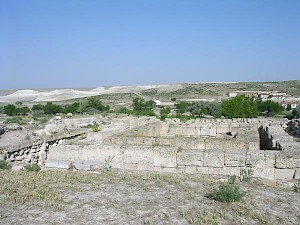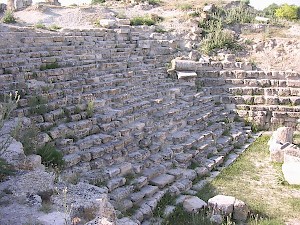Pessinus (Ballihisar)
Q728353
Pessinus was situated along the ancient Royal Road that connected Sardes with the capitals of Persia, Susa and Persepolis. It was famous for its shrine of the goddess Matar or Cybele, the Phrygian Mother of the Gods who was also venerated by the Greeks and Romans. Although Phrygia was controlled by the kings in Gordium, by the Lydian kings in Sardes, by the Achaemenid Persians, and by the Seleucids, the priests of Cybele in Pessinus managed to remain some independence well into the Roman age.note
The temple of Cybele at Pessinus was discovered by Belgian archaeologists in 1967. It is surprisingly small (the cella measures only 8 x 8 meter). Next to the sanctuary was a theater, which also served as the stairs leading to the temple. This combination is pretty unique in the ancient world - I cannot remember having seen anything similar.

The Great Mother of the Gods was also represented sitting on a chariot drawn by lions. According to legend (more...), she had fallen from the sky as a stone (a baetyl), and the name Pessinus may indeed mean something like "castle where the fall has taken place". In 204, the meteorite was given to the Romans - who had requested this - by the Pergamene king Attalus I Soter, and a new temple was built right in the center of Rome, on the Palatine. By then, this part of Anatolia had already been conquered by the Tolistobogii, one of the three Galatian tribes that invaded Asia Minor in the 270s. Pessinus became their capital.
Literature
- Inge Claerhout & John Devreker, Pessinous. Sacred City on the Anatolian Mother Goddess (2008)